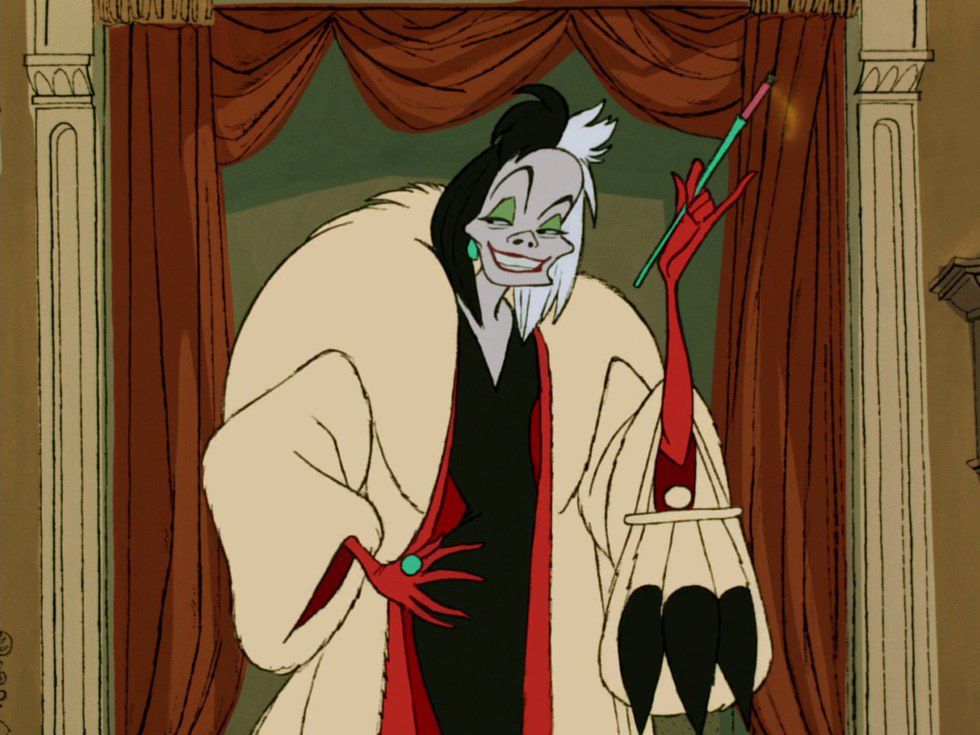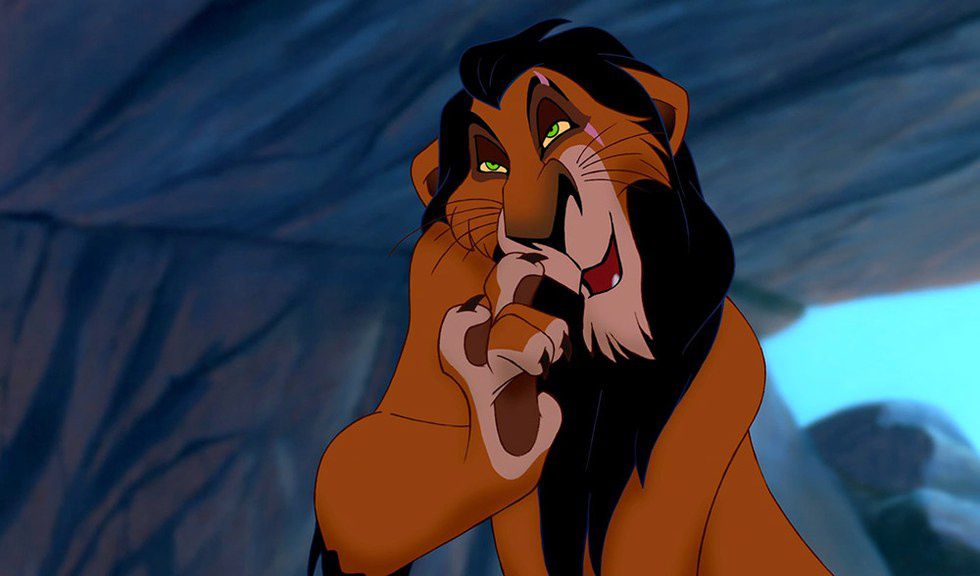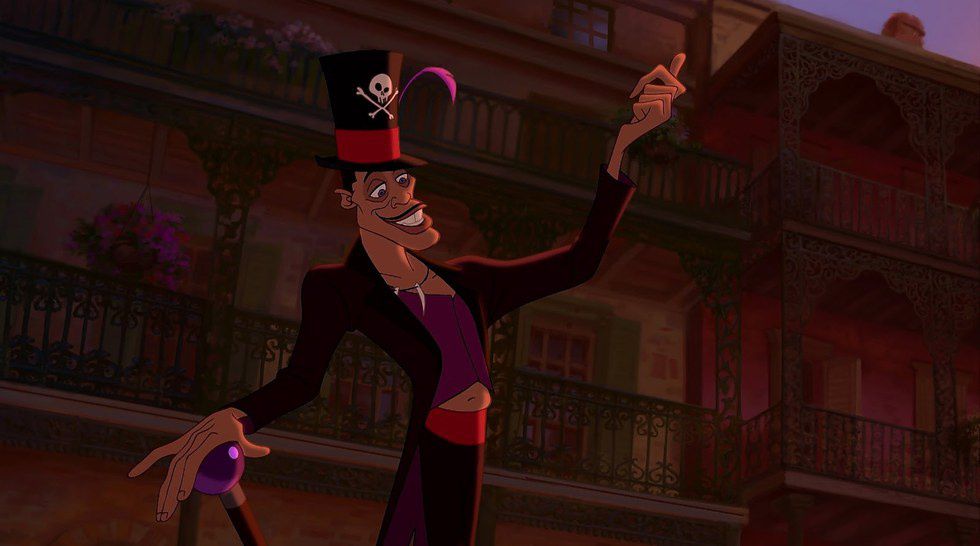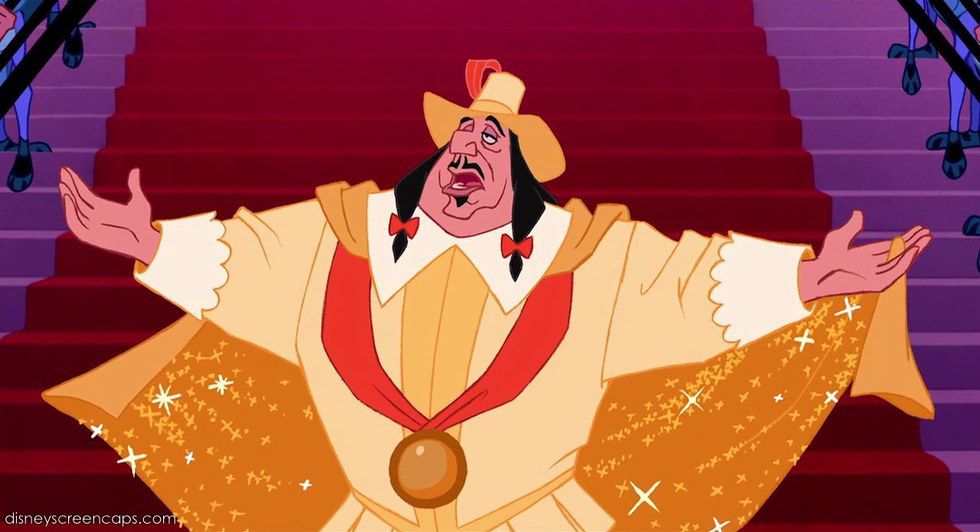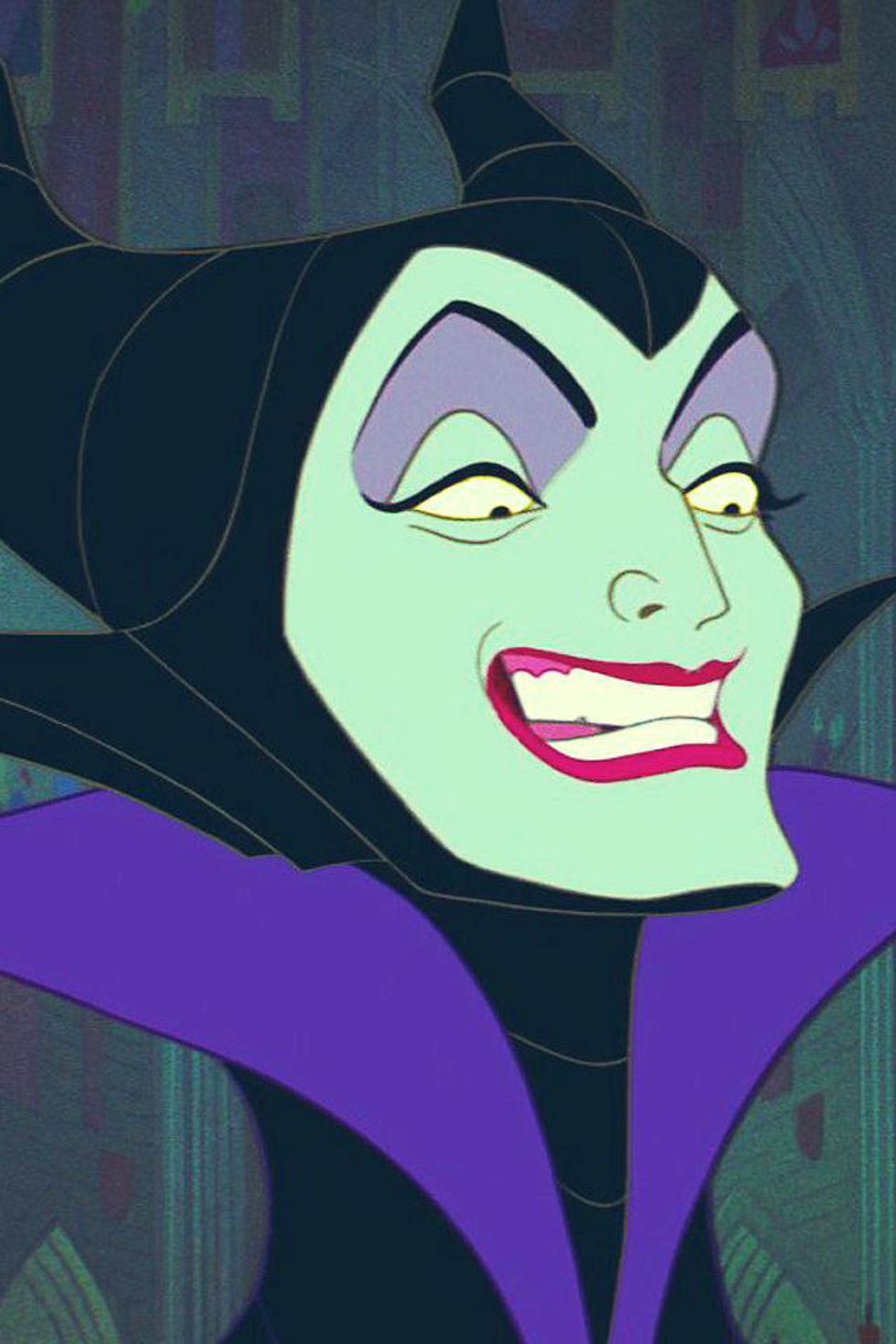Everyone knows that Disney reinforces unrealistic beauty standards (perfect hair, tiny waistlines) and is often historically inaccurate (let’s not pretend the Native American genocide resulted in the settlers and indigenous people living happily ever after), but did you know that Disney appears to constantly equate gender ambiguity with evil? The same can be said of race and other physical distinctions, but those are a whole other story entirely.
Before I get into the details, I want to say that I recognize that Disney isn’t the only company guilty of perpetuating these kinds of prejudices, nor am I saying that it necessarily has some sort of racist/sexist/homophobic agenda. Like all other cultural entities, Disney was and still is a product of its time and continues to evolve accordingly. I am pleased to say that it has improved in respects to diversity and not demonizing “others”. However, it is no secret that both Disney and society at large still has a long way to go. So let’s take a better look at Disney’s faces of evil and see what they have to say about our culture.
Think about it: Ursula, Maleficent, Cruella, Madame Medusa, The Evil Queen, Queen of Hearts, Yzma, etc. What do they all have in common? For starters, all but one of the villainesses have harshly angular facial structures and masculine facial features accentuated with heavy, if not drag-esque makeup. “Drag queens” are men who perform a highly theatrical, or campy, form of femininity as part of their personae — a performance that has been read by some as a biting critique of stereotyped gender roles.
In fact, according to an audio commentary by John Musker, Ron Clements, and Alan Menken, members of Disney animation studio's leading director teams, "The Little Mermaid's" Ursula was actually based on the legendary drag queen Divine, who also donned signature white hair, arched brows, heavy purple eye-shadow and a bold red lip. Maleficent from "Sleeping Beauty" sports similar arched brows, dark purple eye makeup and red lips.
Madame Medusa from "The Rescuers" and The Evil Queen from "Snow White" also meet these three criteria. Cruella De Vil from "101 Dalmatians" and Yzma from "The Emperor's New Groove" share these same features with the exception of Cruella’s eyeshadow being swapped for green and Yzma’s lipstick a dark purple. As mentioned above, there is always some incorporation of the color purple into the villainesses’ makeup or wardrobe.
Could purple in itself is purple, not quite only a “girl” or “boy” color (literally a combination of pink and blue), be illustrative of both gender non-conformity and evil? Curiously, very few of the Disney Princesses incorporate the color purple into their appearances. Although many utilize drag in order to challenge gender roles, Disney doesn’t give me the impression that their villainesses are meant to convey the same messages.
In contrast, the “good” Disney princesses and heroines like Ariel, Aurora and Snow White almost always have round and either cosmetic-free faces or very minimal make-up. With the villainesses, however, it feels as though you could prick your finger on any of their jagged features, which appear to be saturated with make-up.
The exception to the make-up rule is the Queen of Hearts, whose lack of heavy makeup also emphasizes her masculinity. However, the same effects are achieved - because she doesn’t display traditional feminine features or beauty, we are subtly conditioned to associate her with evil. Unlike those who criticize gender clichés with visual satire, Disney is only encouraging them — “true women" are youthful and beautiful (and naturally so).
Consequently, when the antagonists in films are continually fashioned to be “ugly” by conventional norms, audiences may begin to subconsciously comprehend those who may share similar physical characteristics in their own lives as synonymous in terms of morality. In other words, the perpetual combination of Disney Villainesses’ malaise and “ugly” aesthetics reinforce that those who don’t fit the criteria for traditional beauty also reflect an unnaturalness and perhaps, evil nature.
Now think about the male Disney villains: Hades, Jafar, Shere Khan, Governor Ratcliffe, Scar, Shan Yu, Dr. Facilier. What do they all have in common? You guessed it - deviance from gender norms. With the majority of Disney villains, this means physically appearing somewhat “feminine” or maintaining the “sissy” (and other traditional gender conflicting) archetypes . Hades from "Hercules" is a caricature of the, well... (literally) flaming gay man archetype.
In addition to his sassy sense of humor and conventionally effeminate mannerisms, Hades also possesses darker colored eyelids and lips reminiscent of eyeshadow and lipstick. When compared to the heroes, the “good guys” have little to no lipcolor, and if they do have lipcolor, it is almost always restricted to just the upper lip in order to “retain” masculinity.
"Aladdin's" Jafar, the only male to be dressed in a gown instead of pants and a shirt is also clad in full-on shoulder pads and, in addition to dark eyelids, wears black eyeliner. Shere Khan and "The Lion King's" Scar, although not human, also appear to wear “eyeshadow” and exudes the same effete aristocratic energy as Jafar and "Pocahontas'" Governor Ratcliffe. They all use precise articulation, draw out their s’s, and rise inflection at the end of their sentences - qualities society has decided sound “effeminate."
Accounts of anti-aristocratic sentiment likens male aristocracy with “delicate” women. This is similar to how gay men, due to assumptions that they were sexually docile, were synonymous with “delicate” women. Evidently, we see the same sex-related chauvinism displayed, but with somewhat differing logic. They also have “limp wrists”, something often associated with the “sissy” trope.
Voices aside, these Disney villains don’t look or behave in a way that aligns with masculine stereotypes. In addition to his refined English accent and mannerisms (he even lifts his pinky when drinking wine), Governor Ratcliffe wears pigtails with hot pink bows, a hot pink cape and appears to wear purple eyeshadow. During his very theatrical musical number, he’s also clad in a sparkly gold outfit.
Although the other male lions in "The Lion King" also have a slightly darker eyelid color, Scar’s is much more severe and he also appears to have dark “eyeshadow” that extends to his bottom lid like eyeliner. "Mulan"'s Shan Yu, quite possibly the scariest looking Disney Villain, also has a haircut indicative of femininity, as he is the only male character in the movie to wear his long hair down. His unnaturally yellow and black-colored eyes (he should probably get those checked out) appear to be heavily lined in black eyeliner, emphasizing that Shan Yu may not be as masculine as his male, and possibly even female, counterparts.
Dr. Facilier from "The Princess and the Frog" also has similar mannerisms to Jafar, has the same kind of voice as Hades, and has dark eyelids and lips. His attire includes a necklace and tight crop top, two things contradictory of traditional “masculinity”. Again, purple, not quite only a “girl” or “boy” color (literally a combination of pink and blue), seems to be the color of both gender ambiguity and evil.
So what can we take away from this? Do villains and villainesses look the way they do primarily in order to emphasize the hero’s masculinity or femininity and therefore, goodness? If this is true, does this teach young children that conventional male and female attractiveness and behavior suggest whether a person is morally upright or not? That someone in real life who doesn’t conform to or meet these standards are inherently evil? That there is no room for shades of gray (or purple?) in gender?
Furthermore, the main goal of many Disney princesses seems to be to meet her “prince charming” and live happily ever after with him, and the gender non-compliant villains always threaten this dream with their evil agendas. Does this reflect society’s irrational anxieties about the fabricated “gay agenda”? Certainly, one doesn’t need to be gay to present in a way that doesn’t conform to traditional gender roles.
Gender presentation has nothing to do with sexuality. However, because many have made the gross oversimplification that divergence from traditional gender roles equates to being gay, it leads me to believe there may be value to scrutinizing the minutiae tucked away in the pages of the fairy tales that is Disney, as they may have much to say about how society processes gender.
I don’t know if this stereotype stems from society’s disinterest in exploring complex characters or if we are so simple-minded that we need to make sense of the world in binaries. Regardless, I am hopeful that with proper exposure and education we will be able to overcome such cultural and ethical hurdles.
The next time you watch a Disney movie, a movie targeted at youth, or any movie for that matter, pay more attention to what physical appearances, voices and mannerisms have to say about each character, their relationship to traditional gender roles and their morality.




